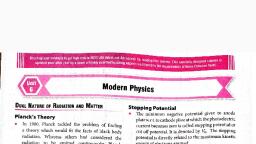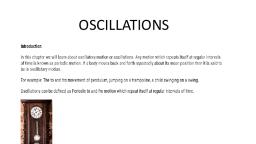Question 1 :
<p class="wysiwyg-text-align-left">The parameter that determine the physical state of gas are :<br/></p><p class="wysiwyg-text-align-left">a) Pressure                  b) Volume</p><p>c) Number of moles    d) Temperature</p>
Question 3 :
<p class="wysiwyg-text-align-left">A gas at temperature 27$^{0}$C and pressure 30 atmospheres is allowed to expand to one atmospheric pressure. If the volume becomes 10 times its initial volumes, the final temperature becomes :<br/></p>
Question 4 :
A gas has an average speed of 10 m/s and a collision frequency of 10 $s^{-1}$. What is its mean free path?<br>
Question 5 :
A molecule of gas in a container hits one wall (1) normally and rebounds back. It suffers no collision and hits the opposite wall (2) which is at an angle of $30^o$ with wall 1.<br>Assuming the collisions to be elastic and the small collision time to be the same for both the walls, the magnitude of average force by wall 2. $(F_2)$ provided the molecule during collision satisfy<br>
Question 6 :
<p class="wysiwyg-text-align-left">At constant temperature and volume, the mass of a gas is related to pressure as :</p>
Question 7 :
A cylinder contains helium at 2.5 atmosphere pressure. Another identical cylinder contains argon at 1.5 atmosphere pressure at the same temperature. If both the gases are filled in any one of the cylinders, the pressure of the mixture will be :
Question 8 :
At what temperature will the kinetic energy of gas molecules be double of its value at 27$^o$C?
Question 9 :
Under which of the following conditions is the law $pV=RT$ obeyed most closely by a real gas?
Question 10 :
The number of degrees of freedom in an oxygen molecule is
Question 11 :
The internal energy of a diatomic gas us given as $U=U_0V$, where $U_0$ is a constant . Molar heat capacity of gas is
Question 12 :
For any gas the pressure coefficient ($\beta $) is equal to the volume coefficient ($\alpha $). This can be proved by:<p></p>
Question 14 :
From what minimum height, a block of ice has<b> </b>to be dropped in order that it may melt completely on hitting the ground :<br/>
Question 17 :
A gas mixture contain $1 g$ ${H_2}$ and $1 g$ ${H_e}$ temperature of gas mixture is increased from ${0^ \circ }$ to ${100^0}C$ at isobaric process. Then find given heat of gas mixture<br>$\left[ {{\gamma _{He}} = 5/3,\,{\gamma _{He}} = 7/5,R = 2\,cal/mol - K} \right]$<br>
Question 18 :
State whether True or False, and correct the statements if false:<br>(i) the molecules of solids are tightly packed.
Question 19 :
If the pressure of an ideal gas contained in a closed vessel is increased by $0.4$%, the increases in temperature is $1^{\circ}C$. The initial temperature of the gas is :
Question 21 :
If the mean free-path of gaseous molecule is 60 cm at a pressure of $1\times 10^{-4}$ mm mercury, what will be its mean free-path when the pressure is increased to $1\times 10^{-2}$ mm mercury?<br>
Question 22 :
Assertion: Vibrational degree of freedom of a di-atomic gas molecule appears at every high temperature.
Reason: Di-atomic gas has two vibrational degree of freedom in one direction.
Question 23 :
The gases carbon-monoxide $(CO)$ and nitrogen at the same temperature have kinetic energies ${E}_{1}$ and ${E}_{2}$ respectively. Then
Question 24 :
From the following statements concerning ideal gas at any given temperature $T$, select the correct one(s).<br>
Question 25 :
Water is falling from 160m height. Assuming that half the K.E. of falling water gets converted into heat, the rise in temperature of water is approximately<br>
Question 26 :
Relation between pressure ($P$) and energy density ($E$) of an ideal gas is-
Question 27 :
$5$ moles of an ideal gas at $100 \,K$ are allowed to undergo reversible compression till its temperature becomes $200 \,K$.<br/>If $C_v = 28 \,JK^{-1} mol^{-1}$, calculate $\Delta U$ and $\Delta PV$ for this process. $(R = 8.0 \,JK^{-1} mol^{-1})$
Question 28 :
<p class="wysiwyg-text-align-left">If an air bubble rises from the bottom of a mercury tank to the top its volume become $1\frac{1}{2}$times. When normal pressure is 76 cm of Hg then the depth of the Hg tank is</p>
Question 29 :
During an experiment, an ideal gas is found to obey a condition $\dfrac{P^{2}}{\rho }$ $= $constant [$\rho = $density of the gas]. The gas is initially at temperature T, pressure P and density $\rho$. The gas expands such that density changes to $\dfrac{\rho}{2}$<br>
Question 30 :
A cylindrical tank of height 2 m has its top closed by a tight fitting friction-less piston of negligible mass. The helium gas inside the cylinder is at a pressure of 1 atmosphere. The gas is compressed slowly by pouring mercury on the piston. If the temperature of the gas is maintained constant, then the mercury will spill over the top of the cylinder when the piston is at a height of














































